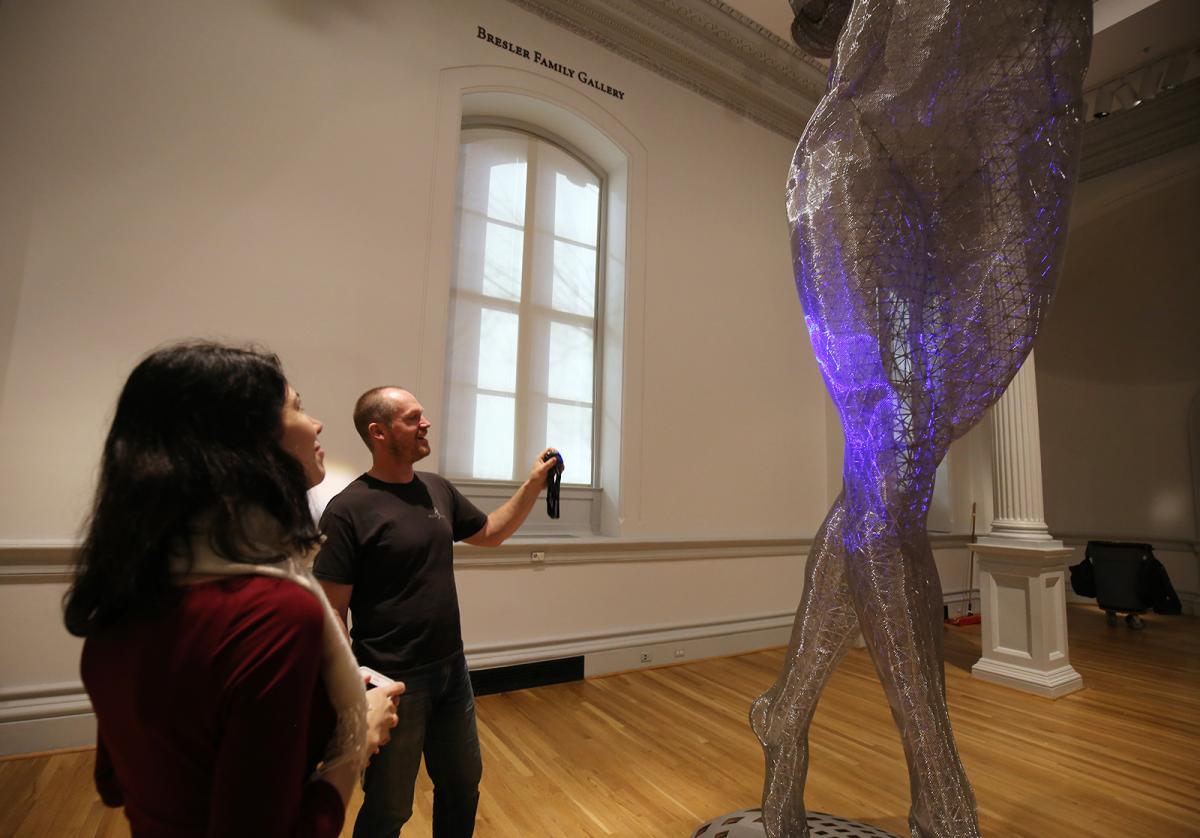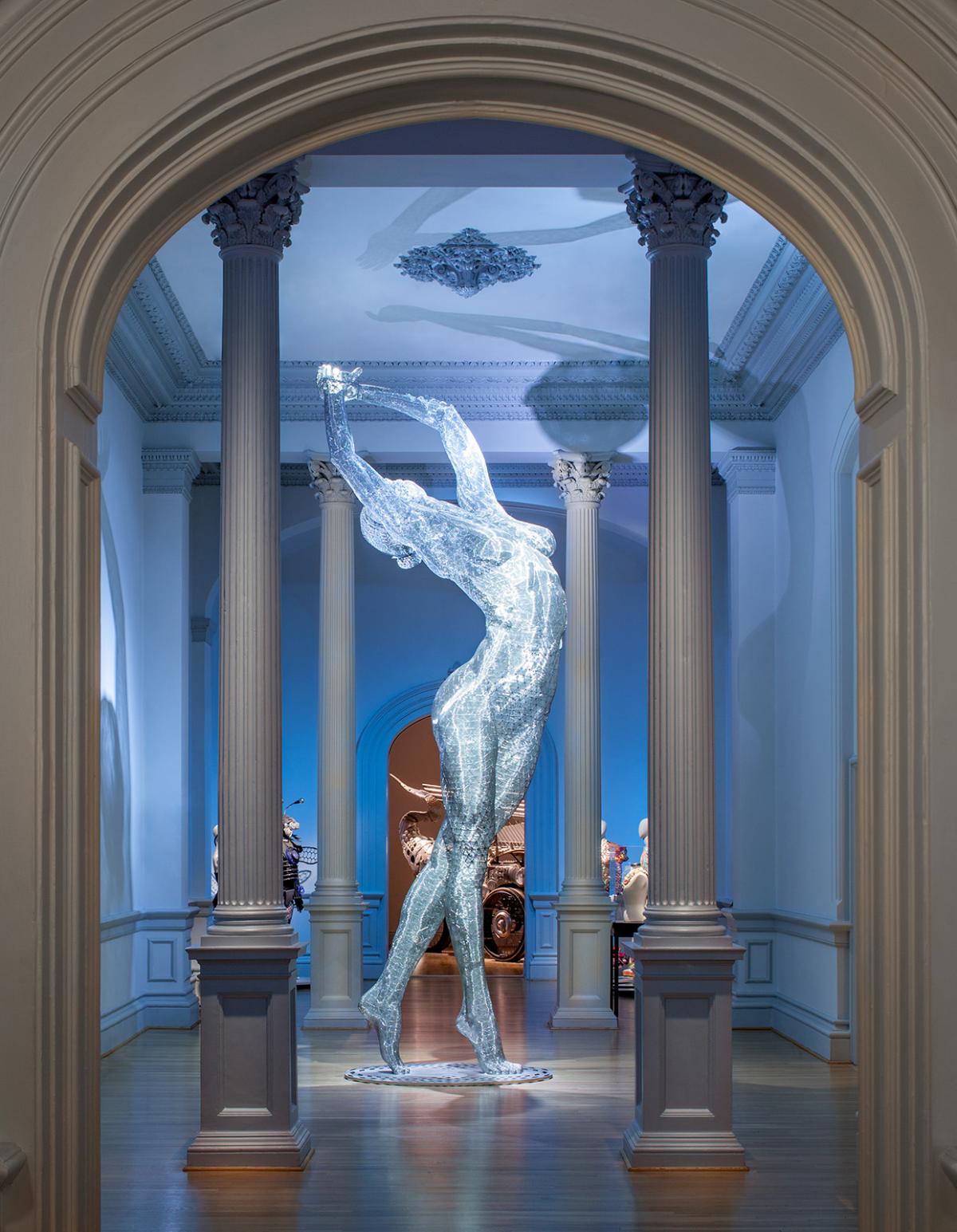“What would the world be like if women were truly safe?” This is the question Marco Cochrane challenges both male and female audiences to consider when viewing his sculptureTruth is Beauty. The sculpture – a woman on her toes, stretched backwards – is made from stainless steel and mesh. I was surprised to learn that the 18-foot figure in the Renwick Gallery is a replica of the 55-foot original that stood at Burning Man in 2013 (and it’s still nearly four times my height!). When I entered the Burning Man exhibit at the Renwick, I was immediately drawn to the figure that nearly touched the ceiling. Truth is Beauty is the largest object in the room; the Amazonian figure towered over other museumgoers and other works around it. I was instantly overwhelmed, first, by the sheer size of the sculpture.
As I moved closer to the figure, I noticed how elegant she seemed — the arch of her back and the gentle tilt of her head gave her a certain tenderness that made it hard to look away. Special lighting effects also make her appear otherworldly. The mesh allows the multicolored lights to pass through, casting large shadows onto walls, making the whole experience feel dream-like. At Burning Man, the original figure rivaled the vastness of Nevada’s Black Rock Desert, and yet the 18-foot figure’s expression of freedom makes her seem confined by the gallery ceiling.
Part of what I found most interesting about the sculpture is that her pose is simple and natural, yet carries so much emotional power. She does not seem afraid to take up space and stands as if to say I am here. Cochrane implies that the female form doesn’t need to be performing in any special way to have value in art or in life. Cochrane’s last sculpture in his series of monumental sculptures of women, The Bliss Project, focuses on this idea that women should be able to exist freely.
Cochrane says this is the woman open, without the pressures and fears that often come along with having a female body. I have never seen steel mesh used in a sculpture and while examining the material up close, I wondered: Why were these particular materials used and how do they affect how I perceive the figure? The combination of steel and mesh make the piece a paradox ‒ she is equal parts strong and exposed. The stance is open and accepting in nature, but also exudes defiance.
At first glance, I thought the figure might be a generalization of no particular woman’s body, but perhaps the artist’s recreation of what he considers to be an ‘ideal’ body. However, the incredible level of detail, especially given the materials used, suggested to me that this figure was not a generalization. Even though she is nude, the sculpture does not feel exploitive or gratuitous. Though she is large and, literally, on display, she does not seem to be made for a sexual gaze. The figure is modeled after Deja Solis, who chose this pose for herself. She was able to move in the way she wanted, so this sculpture demonstrates how women, or least this woman, would act if women were universally safe from physical violence. The woman’s figure is seen through the eyes of the female model as well as the male artist, which I think makes for an interesting balance between the female imagination and the artist’s perception of femininity. It seems that Cochrane is not only making a statement about freedom (and lack thereof), but also femininity. The sculpture is markedly feminine; her delicate and ethereal expressions are aligned with what we consider traditionally feminine. Her size and commanding presence, however, paradoxically fight against the notion that women must be restricted in expression.
























